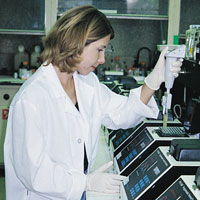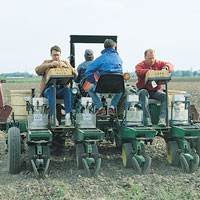Reaching our Potential

The Maize Breeding & Genetics Laboratory faculty strive continuously to develop methods of improving corn. We don't wait for a new disease to threaten crops or a new request for a particular trait. Instead, we anticipate the needs of tomorrow and work to meet them today. Our comprehensive program to improve grain nutritional traits and breed disease-resistant germplasm leads the field. But evolving technology means that the field is evolving, too. To maintain our preeminent position, we also must grow.
This, of course, requires a sustainable source of funding. The Laboratory's long-term field programs rely on trained, experienced technicians and support staff, whose salaries are uncertain given the temporary and competitive nature of funding through grants. In addition, we need to purchase, maintain and upgrade expensive planting and harvesting equipment. Perhaps most importantly, we need a reliable source of funds to attract the most talented students in order for the University-and subsequently, the seed corn industry-to have access to a new generation of skilled scientists.

In 1954, the state of Illinois provided 72 percent of the University's budget. By 1997, state support had fallen to just 30 percent. That same year, an external review of the Maize Breeding & Genetics Laboratory concluded: "Without reinvestment in maize genetics, the strength of the programs of the current group of breeders and pathologists will not reach its full potential."2
To continue to thrive and meet the challenges of the future, the Maize Breeding & Genetics Laboratory must form partnerships with private investors.
2 External Review of the Maize Breeding & Genetics Program, submitted April 9, 1997 by Jeff Bennetzen, Marty Carson, Jon Geadelmann, Kendall Lamkey, and William Tracy.